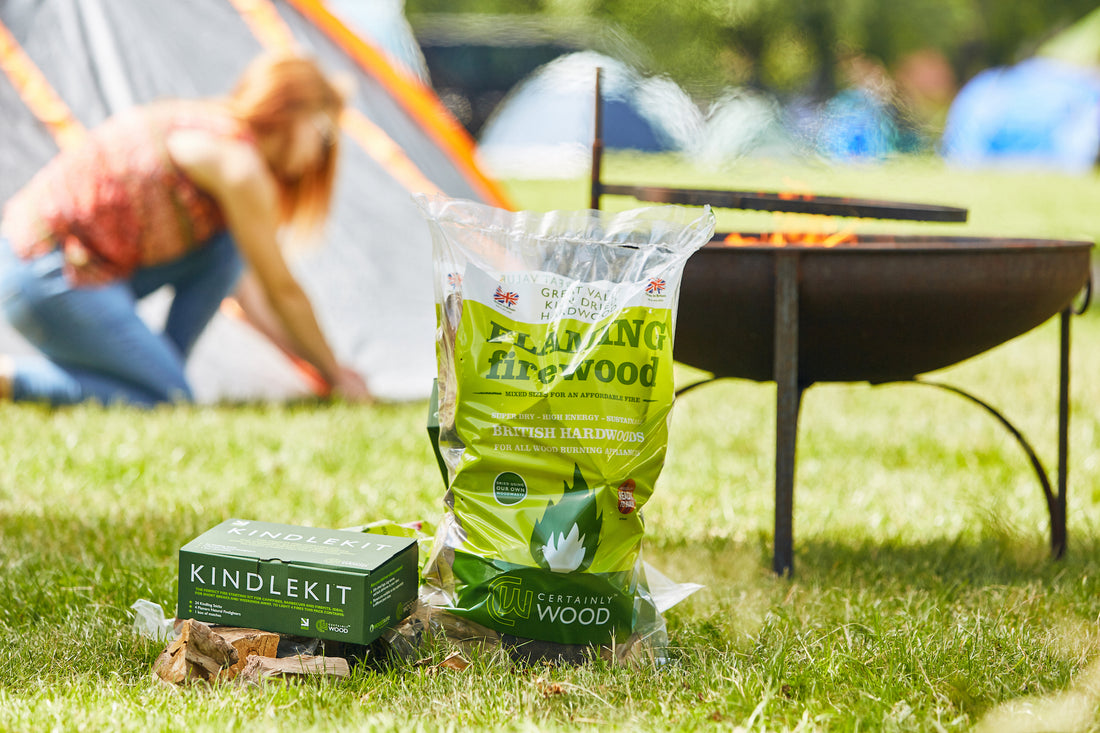
Will the latest ban on the sale of wet wood affect campsites?
Share
You will undoubtedly have seen the flurry of media the other day regarding the government’s response to the consultation on Air Quality – Using cleaner fuels for domestic burning.
Once again there is concern within the Stove Industry Alliance (SIA) that there has been some serious misreporting and there have been efforts where possible to counter these claims.
Overall, the stove industry and the fuel industry welcome the news and it is exactly what was hoped for and worked towards with government departments. However, some of the reporting still says that wood burning stoves are to be banned within 12 months, and there are also claims that wood and coal are the biggest contributor of particulate emissions. These are simply NOT true and the industry is working hard to counter all of these claims.
The legislation is only directed at ‘Domestic burning’ so does not directly affect the camping and glamping sectors but suffice to say that the whole issue has raised question marks over what other factors lead to particulate emissions and this will include things such as outdoor fires, campfires, stoves in tents, pods/cabins, pizza ovens, firepits etc. 
So, whilst you could just ignore it, it will be prudent to consider the following steps in being proactive in addressing the issue of particulate emissions (smoke) on your campsites so that as the focus turns to other areas, you are ahead of the game:
1. If you are selling firewood to campers, make sure you only sell wood that is dried to below 20% moisture content.
2. If you are buying in the wood, make sure you only buy wood that is from a supplier that is Woodsure/Ready to Burn approved.
3. If you are supplying your own wood, invest in a moisture meter and actually measure the moisture content in the centre of the log to make sure its below 20%. You may think its dry enough, but be sure.
4. It might be draconian, but it is suggested that you ONLY allow your customers to burn approved fuel. If the bag does not carry the Ready to Burn logo, then don’t allow it.
5. By addressing the above, you will be sure of minimal smoke on site.
6. If you have wood burning stoves in situ, make sure the flue is swept annually and that the stoves are serviced by an HETAS approved installer which may even be the chimney sweep. It is likely that if chimney sweeps don’t do the whole job now, then they are likely to do so in the future.
7. If you are looking to install new appliances, make sure that they are Ecodesign stoves. These are more efficient and will comply with the new European legislation that comes into play in 2022. Be aware that these are more susceptible to poor performance if wood is not dried below 20% moisture content – the tolerance is much smaller.
In summary, it is thought that actually this should be seen as an opportunity to improve wood burning on site, to reduce smoke and emissions and ensure there is no impact on the environment.
All in all, we need to look at the bigger picture, be realistic about the risks when compared to other things in our lives and remember that if we want to reduce reliance on fossil fuels, then burning a truly sustainable and renewable source of fuel must be regarded as positive not to mention the simple joy of sitting around a cosy campfire or stove – What could be better?
{03/03/2020}
